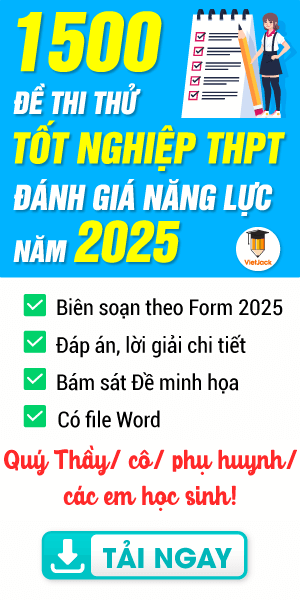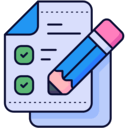Giáo án Tiếng Anh 12 Global Success Unit 1 Reading
Giáo án Tiếng Anh 12 Global Success Unit 1 Reading
Chỉ từ 300k mua trọn bộ Kế hoạch bài dạy (KHBD) hay Giáo án Tiếng Anh 12 Global Success bản word phong cách hiện đại, trình bày đẹp mắt, dễ dàng chỉnh sửa:
- B1: gửi phí vào tk:
1133836868- CT TNHH DAU TU VA DV GD VIETJACK - Ngân hàng MB (QR) - B2: Nhắn tin tới Zalo VietJack Official - nhấn vào đây để thông báo và nhận đề thi
I. OBJECTIVES
By the end of this lesson, Ss will be able to:
1. Knowledge
- Develop reading skills for general ideas and for specific information about a famous person.
2. Competences
- Develop communication skills and creativity;
- Be collaborative and supportive in pair work and teamwork;
- Develop presentation skills;
- Actively join in class activities.
3. Personal qualities
- Be respectful of a famous person – Steve Jobs and his achievements;
- Develop self-study skills.
II. MATERIALS
- Grade 12 textbook, Unit 1, Reading
- Computer connected to the Internet
- Projector / TV
III. PROCEDURES
1. WARM-UP (5 mins)
|
a. Objectives: - To stir up the atmosphere and activate students’ knowledge about the figure they are going to learn about in the lesson; - To set the context for the reading part; - To enhance students’ skills of cooperating with teammates. b. Content: - Video watching c. Expected outcomes: - Students join the activity enthusiastically and gain knowledge on the topic. d. Organisation: |
|
|
TEACHER AND STUDENTS ’S ACTIVITIES |
CONTENTS |
|
Video watching - Teacher divides the class into 2 groups. - Students work in groups to do the activity. - Before playing the video, teacher asks Ss to watch carefully and try to remember as many details as possible. Ss can take notes if they want. - Students raise their hands to answer the questions. - Teacher shows questions one by one, Ss raise their hands and say BINGO to grab the chance to answer. - If the answer is correct, they get one point for their team. - The team with the higher score will be the winner. |
Link: https://www.youtube.com/watch?v=bTpvbKCYaoQ Questions: 1. Where was he born? (San Francisco) 2. Who are Clara and Paul? (his foster parents) 3. What does his dad do? (a mechanic) 4. What does his mum do? (an accountant) 5. Where did he meet his best friend? (in computer club) 6. What do Steve Jobs and his best friend both love? (electronics) 7. Which company did Steve Job and his best friend create? (Apple) |
e. Assessment
- Teacher observes and gives feedback.
2. ACTIVITY 1: PRE-READING (9 mins)
|
a. Objectives: - To get students learn vocabulary related to the topic; - To activate prior knowledge about the topic and get Ss involved in the lesson. b. Content: - Task 1: Work in pairs. Discuss the questions. (p.11) - Pre-teach vocabulary c. Expected outcomes: - Students can identify some vocabulary related to the topic. d. Organisation |
|
|
TEACHER’S AND STUDENTS’S ACTIVITIES |
CONTENTS |
|
Task 1. Work in pairs. Discuss the questions. (4 mins) - Ask Ss to work in pairs to answer the questions. - Students work in pairs and answer the questions. - Ask some pairs to share their answers with the whole class. - Students write questions they want to know on the board. - Ask what other information they want to know about him. Write their questions on the board. - Introduce the topic of the reading text. |
Suggested answers: 1. He is Steve Jobs. 2. He is famous for co-founding the Apple company and inventing products such as the iPhone and the iPod. |
|
Vocabulary pre-teaching (5 mins) - Teacher introduces the vocabulary. - Teacher explains the meaning of the new vocabulary by pictures. - Students listen to the teacher’s explanation and guess the words. - Teacher checks students’ understanding with the “Rub out and remember” technique. - Students write down the new words in their notebook - Teacher reveals that these five words will appear in the reading text and asks students to open their textbook to discover further. |
New words: 1. (to) bond 2. cutting-edge (adj) 3. blockbuster (n) 4. (to) diagnose with 5. visionary (adj) |
e. Assessment
- Teacher checks students’ pronunciation and gives feedback.
- Teacher observes Ss’ writing of vocabulary in their notebooks.
3. ACTIVITY 2: WHILE-READING (20 mins)
|
a. Objectives: - To get Ss to practise guessing the meaning of words from context; - To help Ss develop reading skills for general information; - To help Ss develop reading skills for specific information. b. Content: - Task 2: Read the article. Choose the words or phrases with the closest meaning to the highlighted words or phrases in the text. (p.11) - Task 3: Read the article again. Match each section (a–c) with a heading (1–5). There are TWO extra headings. (p.12) - Task 4: Read the article again. Complete the diagram with information from the text. Use one word for each gap. (p.12) c. Expected outcomes: - Students can thoroughly understand the content of the text and complete the tasks successfully d. Organisation |
|
|
TEACHER AND STUDENTS ’S ACTIVITIES |
CONTENTS |
|
Task 2: Read the article. Choose the words or phrases with the closest meaning to the highlighted words or phrases in the text. (6 mins) - Ask Ss to read the text. Ask them to locate the highlighted words/phrases in the text, e.g. 1. The word ‘adopted’ is found in the sentence: “He was adopted by Clara and Paul Jobs.” - Students read the text and locate the highlighted words individually. - Students study the context and do the tasks as required. - Ask students to study the context (including the sentence containing the word/phrase as well as neighbouring sentences) carefully, e.g. 1. The word ‘adopted’ is found among these sentences: His biological parents were not married and gave him up for adoption. He wasadopted by Clara and Paul Jobs. - Encourage Ss to replace the word/phrase with each choice to see which one best replaces the word/phrase. E.g. 1. His biological parents were not married and gave him up for adoption. He was given birth to / taken by another family as their own child by Clara and Paul Jobs. The choice B. “taken by another family as their own child” best replaces the word ‘adopted’ because his biological parents gave him up. - In weaker classes, check their understanding of the words by asking Ss to make sentences with them. |
Answer key: 1. B 2. B 3. A 4. A 5. A Strategy: Reading for vocabulary To read and understand the meanings of words/phrases in context, students should: 1. Locate the word or phrase in the text. 2. Study the context (including the sentence containing the word/phrase as well as neighbouring sentences) carefully. 3. Try to replace the word/phrase with each choice to see which one best replaces the word/phrase. |
|
Task 3: Read the article again. Match each section (A–C) with a heading (1–5). There are TWO extra headings. (7 mins) - Ask Ss to read the headings carefully. Make sure they understand them. - Students read the headings first, then skim through each section. - Ask Ss to skim through each section, and choose the heading that covers the ideas of the whole section. - Remind them that there are TWO extra headings. Remember that incorrect headings for a section are often “irrelevant” (i.e., not mentioned in the section), “incorrect” (i.e., not true according to the text), “too narrow” (i.e., only representing part of the section) or “too general” (i.e., not specific to that section only). - Students check answers with the whole class and give explanations for their choice. - Students choose the heading that covers the ideas of the whole section. - Check answers as a class. - Have Ss explain why certain headings are not needed, e.g. Heading 3 only focuses on part of Section C so does not represent the main idea of the whole section. Similarly, Heading 4 is also incorrect since it only covers part of Section A. |
Answer key: A-2 B-1 C-5 Strategy: Reading for main ideas (Headings) To read and understand the main ideas of a text and select the best headings for a section, students should: 1. Read the headings carefully. Make sure you understand them. 2. Skim through each section, and choose the heading that covers the ideas of the whole section. 3. Pay attention to the number of extra headings. Remember that incorrect headings for a section are often “irrelevant” (i.e., not mentioned in the section), “incorrect” (i.e., not true according to the text), “too narrow” (i.e., only representing part of the section) or “too general” (i.e., not specific to that section only). |
|
Task 4: Read the article again. Complete the diagram with information from the text. Use one word for each gap. (7 mins) - Ask Ss to study the timeline to get the general ideas. Make sure they understand that each number/year on the timeline is a milestone in the life of Steve Jobs. In weaker classes, give Ss an example, e.g. In 1955, he was born in California ... - Students do as instructed to complete the diagram. - Students compare their answers with partners then check with the whole class. - Draw their attention to each gap. Encourage Ss to guess the type of information they need for each gap. E.g. For Blank (1) we need a verb in passive voice. For Blank (2) it is an adjective. - Check answers as a class. Extension: Play a game: Make some statements based on the text and have Ss decide whether they are True, False or Not Given by doing some actions. If the statement is True according to the text, they should raise their right hand. They should raise their left hand for a false statement, and stand up if it is Not given (No information is provided). E.g. Steve Jobs was born in Oregon (False/left hand). His parents were rich (Not given/stand up). His friend was very good at computer engineering. (True/right hand) |
Answer key: 1. adopted 2. Apple 3. company 4. products 5. cancer |
e. Assessment
- Teacher’s observation on Ss’ performance.
- Teacher’s feedback and peers’ feedback.
4. ACTIVITY 3: POST-READING (8 mins)
|
a. Objectives: - To check students’ understanding about the reading passage; - To help some students enhance presentation skills; - To practise team working; - To give students authentic practice in using target language. b. Content: - Task 5: Work in pairs. Discuss the following question. What do you admire the most about Steve Jobs? (p.12) c. Expected outcomes: - Students can use the language and ideas from the unit to talk about their admiration for Steve Jobs. d. Organisation |
|
|
TEACHER AND STUDENTS ’S ACTIVITIES |
CONTENTS |
|
Task 5: Work in pairs. Discuss the following question. What do you admire the most about Steve Jobs? - Ask Ss to work in pairs. Have them discuss which achievement by Steve Jobs they find most admirable. Encourage them to explain why they admire that achievement the most. - Students practise speaking in pairs. - Students share their answers with the whole class. - Students listen and give feedback. - Invite some pairs to share their answers with the whole class. - Ask other Ss to give comments and correct any mistakes if possible. |
Suggested answers: What I admire the most about Steve Jobs is how he overcame difficulties in his life to achieve a significant breakthrough in communication technology. He dedicated his life to building technology and inventing the first real personal computer, that is user-friendly, efficient and stylish. |
e. Assessment
- Teacher’s observation on Ss’ performance.
- Teacher’s feedback and peers’ feedback.
5. CONSOLIDATION (3 mins)
a. Wrap-up
- Teacher asks students to talk about what they have learnt in the lesson.
b. Homework
- Write a short paragraph about the life stories of Steve Jobs and what you admire most about him.
- Do exercises in the workbook.
- Prepare for the next lesson – Speaking.
................................
................................
................................
Trên đây là nguồn học liệu Giáo án Tiếng Anh 12 Global Success miễn phí của NXB Giáo dục Việt Nam. Để xem chi tiết, mời bạn tham khảo: Giáo án Tiếng Anh 12 Global Success (NXB Giáo dục)
Để mua Kế hoạch bài dạy (KHBD) hay Giáo án Tiếng Anh 12 năm 2025 mới nhất, mời Thầy/Cô vui lòng xem thử:
Xem thêm các bài soạn Giáo án Tiếng Anh lớp 12 Global Success (bộ sách Kết nối tri thức) chuẩn khác:
Đã có app VietJack trên điện thoại, giải bài tập SGK, SBT Soạn văn, Văn mẫu, Thi online, Bài giảng....miễn phí. Tải ngay ứng dụng trên Android và iOS.
Theo dõi chúng tôi miễn phí trên mạng xã hội facebook và youtube:Nếu thấy hay, hãy động viên và chia sẻ nhé! Các bình luận không phù hợp với nội quy bình luận trang web sẽ bị cấm bình luận vĩnh viễn.
- Giáo án lớp 12 (các môn học)
- Giáo án điện tử lớp 12 (các môn học)
- Giáo án Toán 12
- Giáo án Ngữ văn 12
- Giáo án Vật Lí 12
- Giáo án Hóa học 12
- Giáo án Sinh học 12
- Giáo án Địa Lí 12
- Giáo án Lịch Sử 12
- Giáo án Lịch Sử 12 mới
- Giáo án GDCD 12
- Giáo án Kinh tế Pháp luật 12
- Giáo án Tin học 12
- Giáo án Công nghệ 12
- Giáo án GDQP 12
- Đề thi lớp 12 (các môn học)
- Đề thi Ngữ văn 12
- Đề thi Toán 12
- Đề thi Tiếng Anh 12 mới
- Đề thi Tiếng Anh 12
- Đề thi Vật Lí 12
- Đề thi Hóa học 12
- Đề thi Sinh học 12
- Đề thi Địa Lí 12
- Đề thi Lịch Sử 12
- Đề thi Giáo dục Kinh tế Pháp luật 12
- Đề thi Giáo dục quốc phòng 12
- Đề thi Tin học 12
- Đề thi Công nghệ 12




 Giải bài tập SGK & SBT
Giải bài tập SGK & SBT
 Tài liệu giáo viên
Tài liệu giáo viên
 Sách
Sách
 Khóa học
Khóa học
 Thi online
Thi online
 Hỏi đáp
Hỏi đáp

